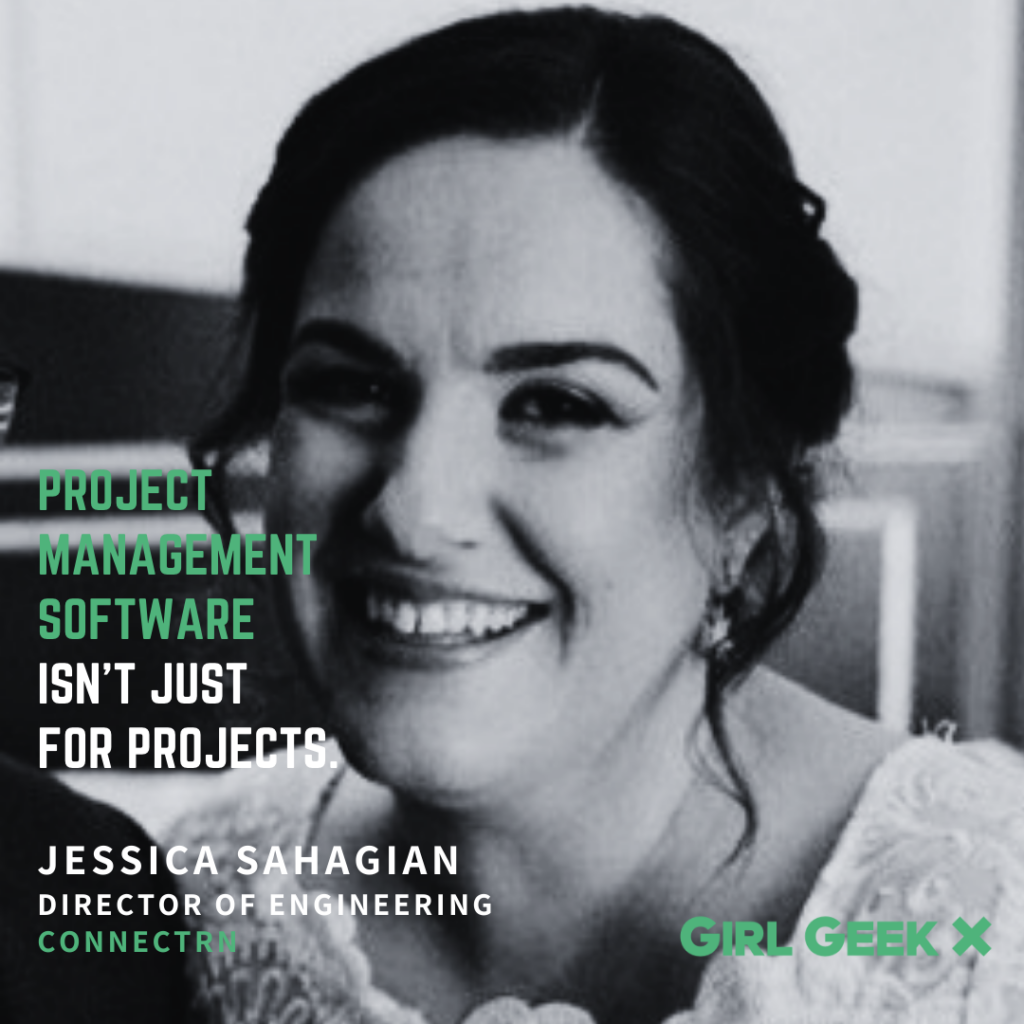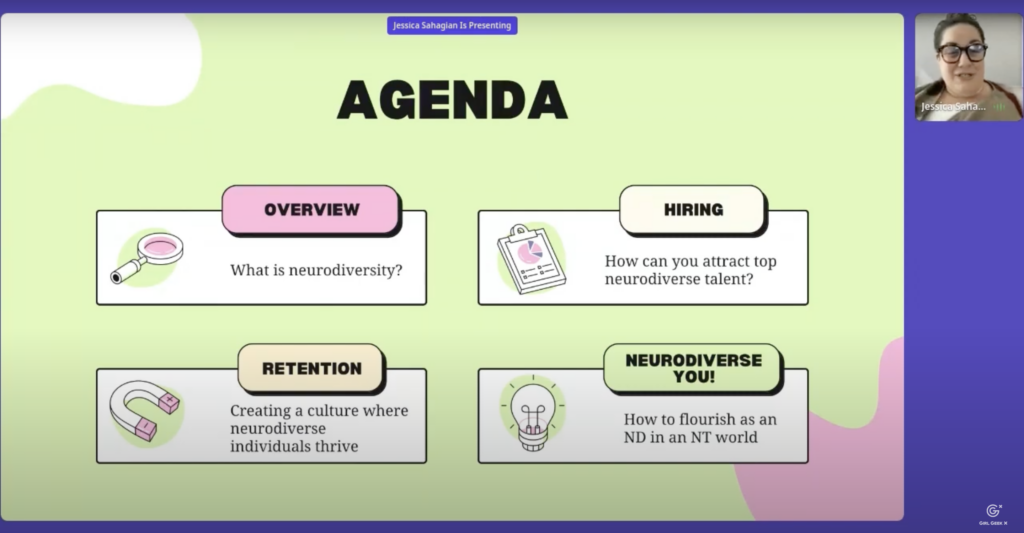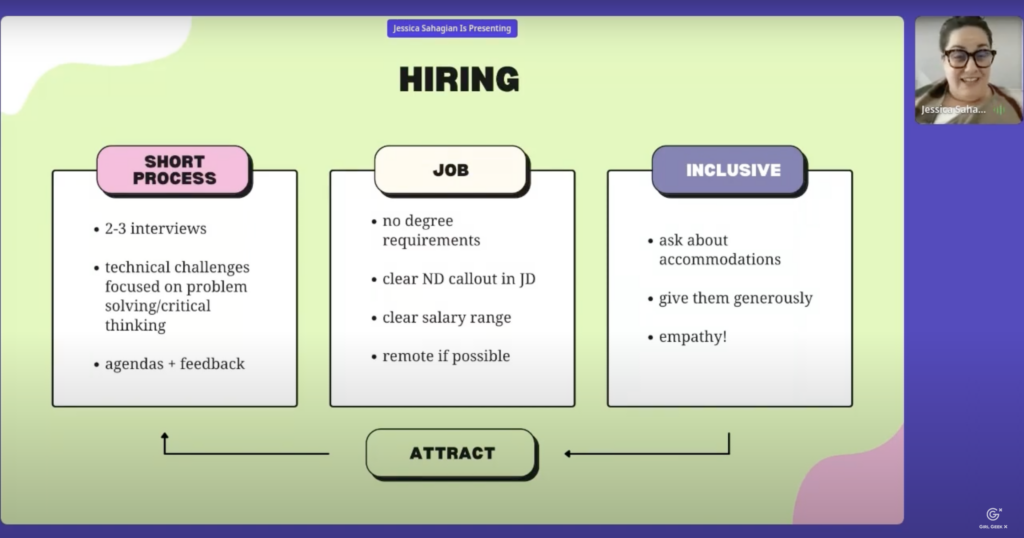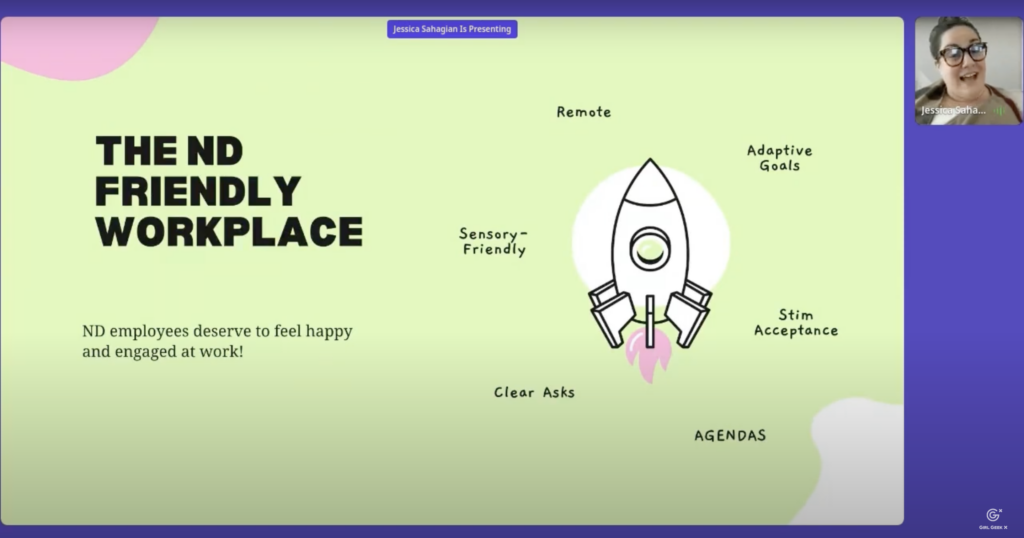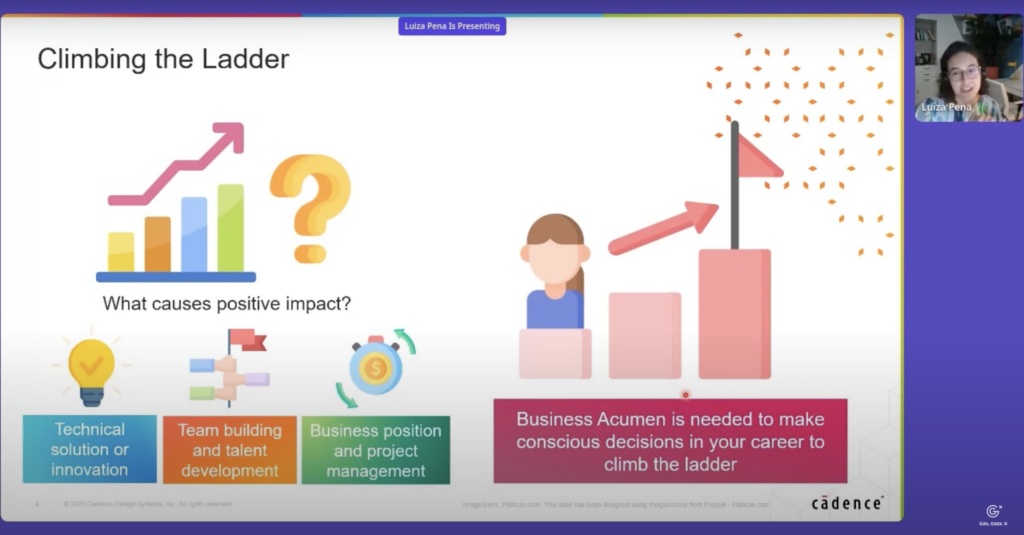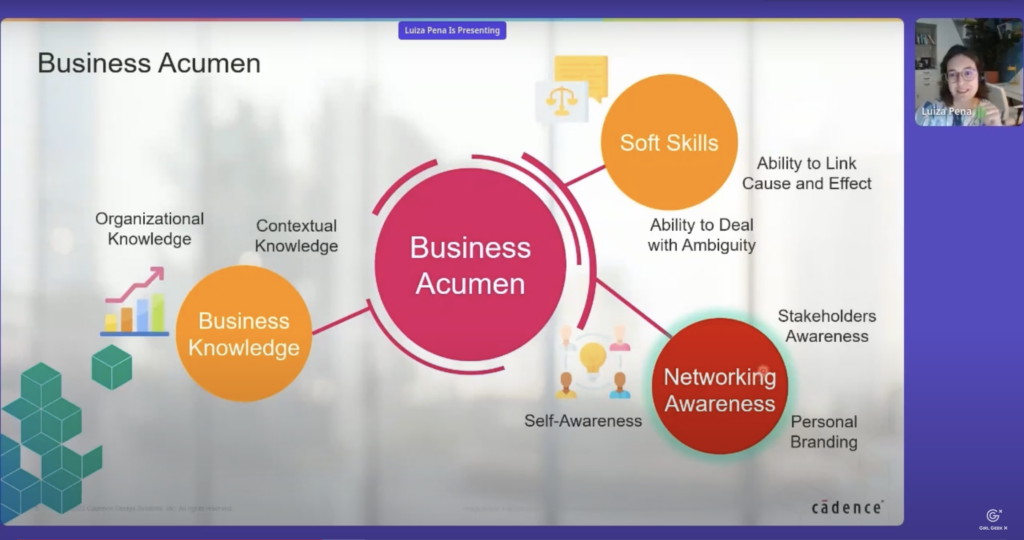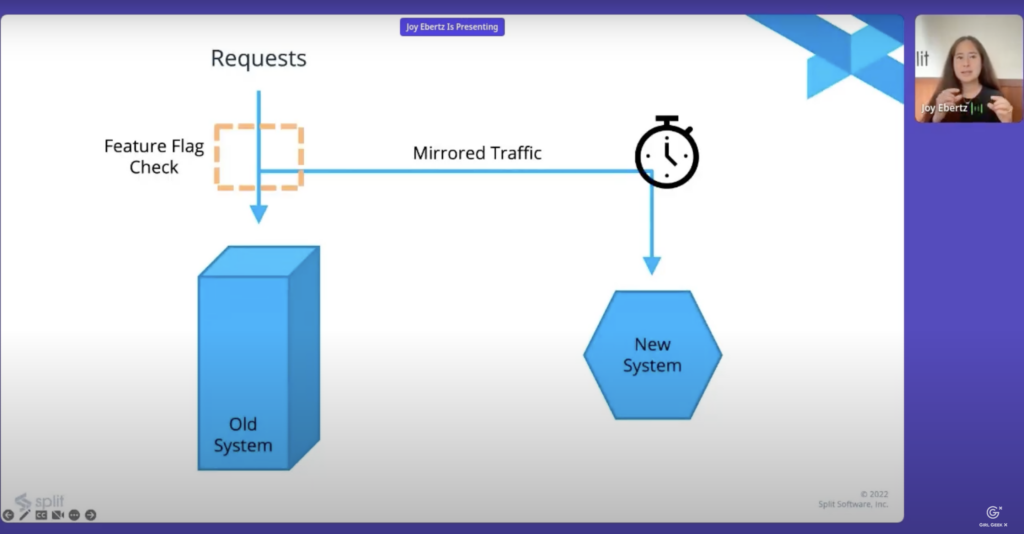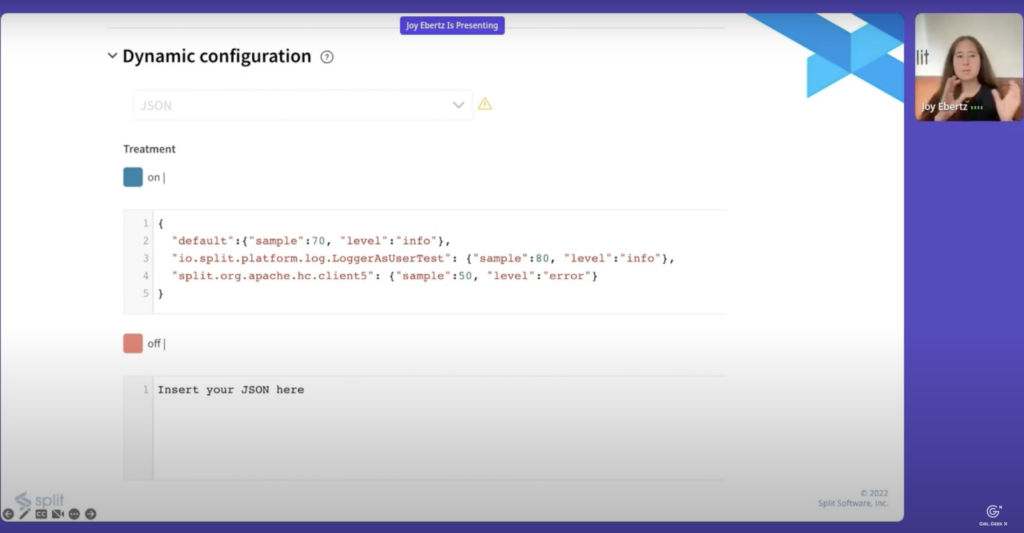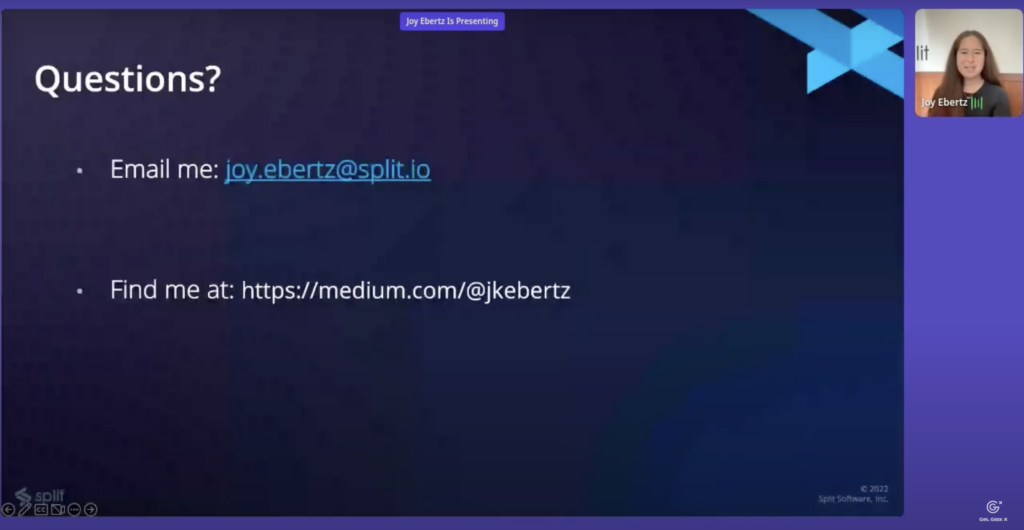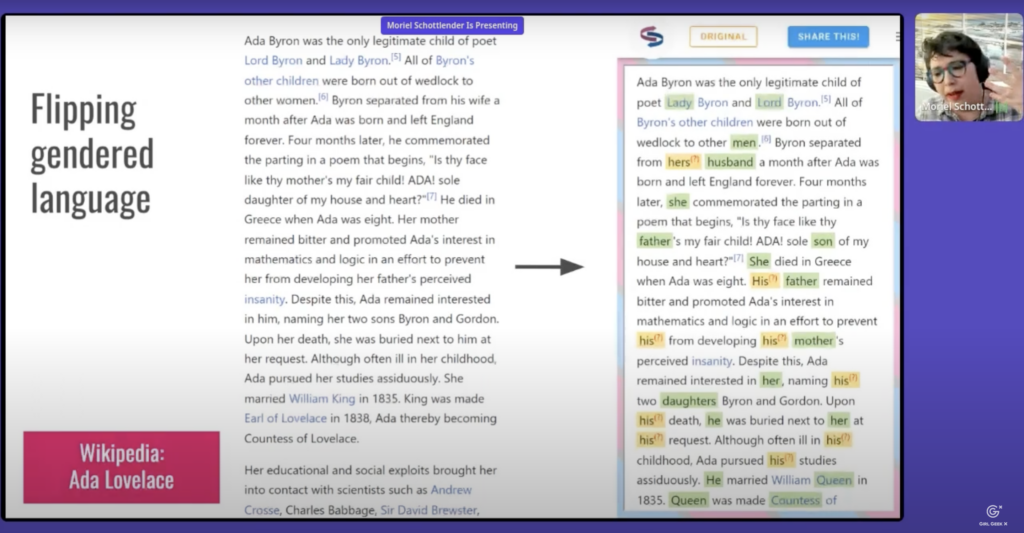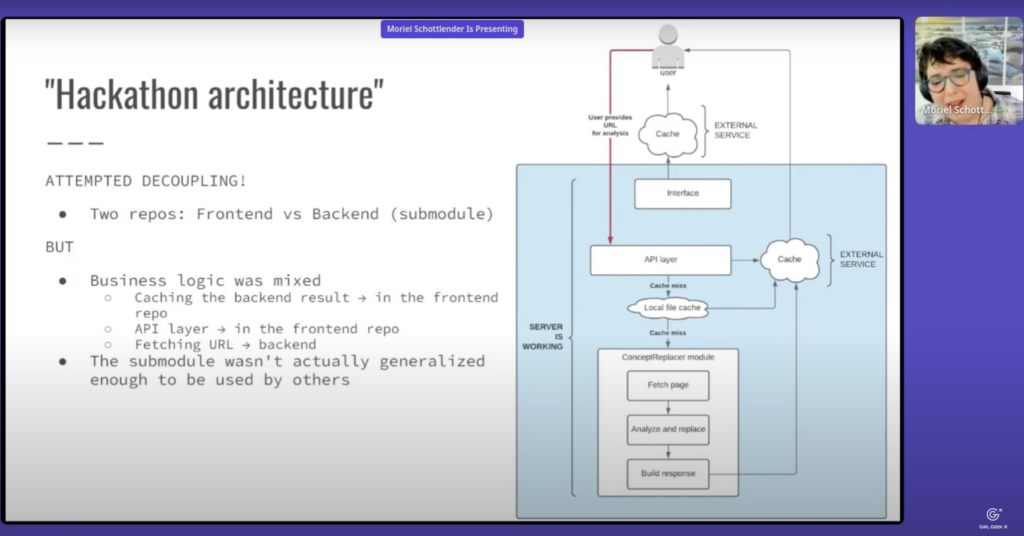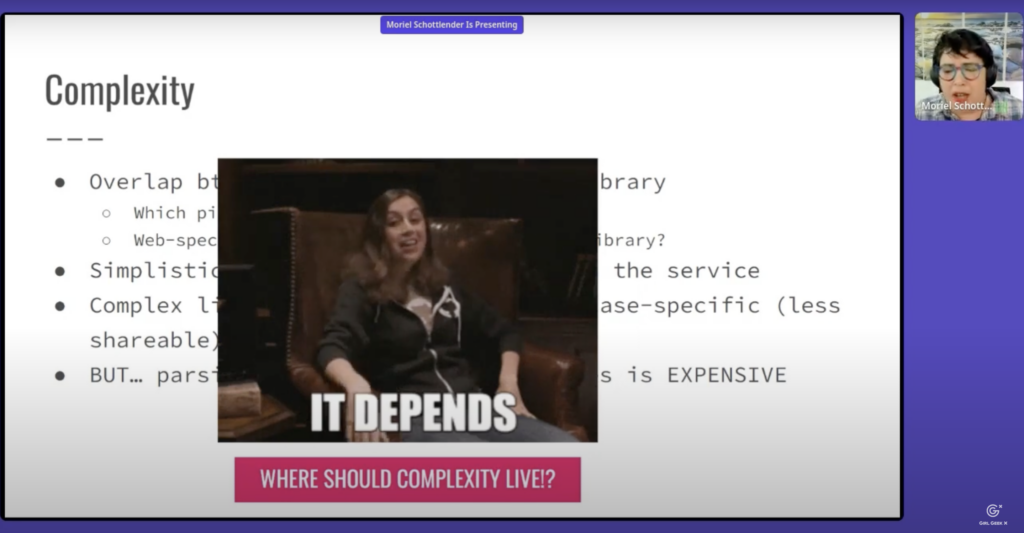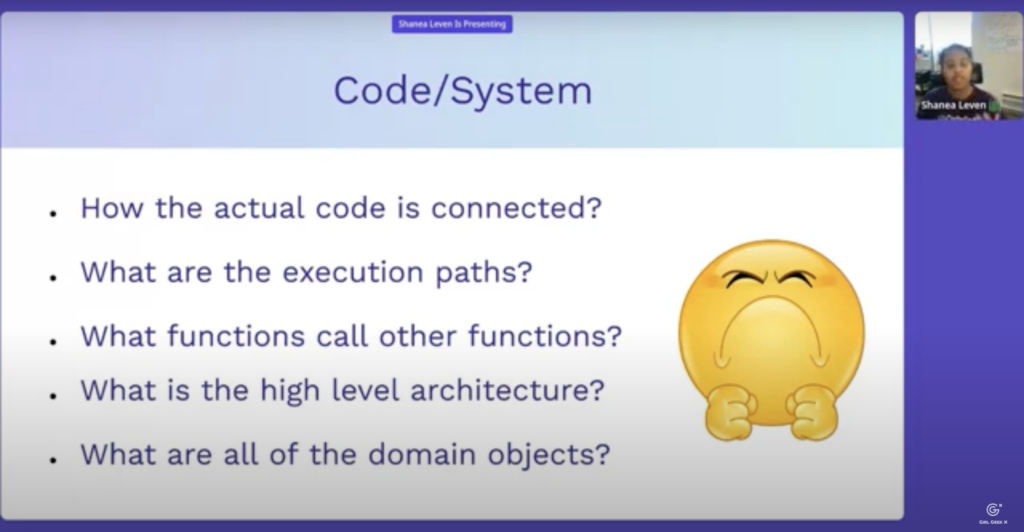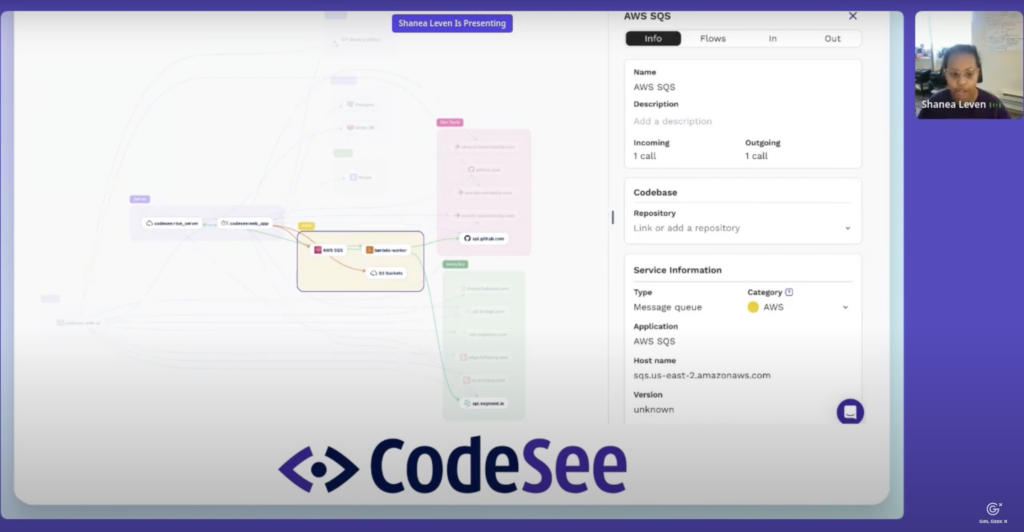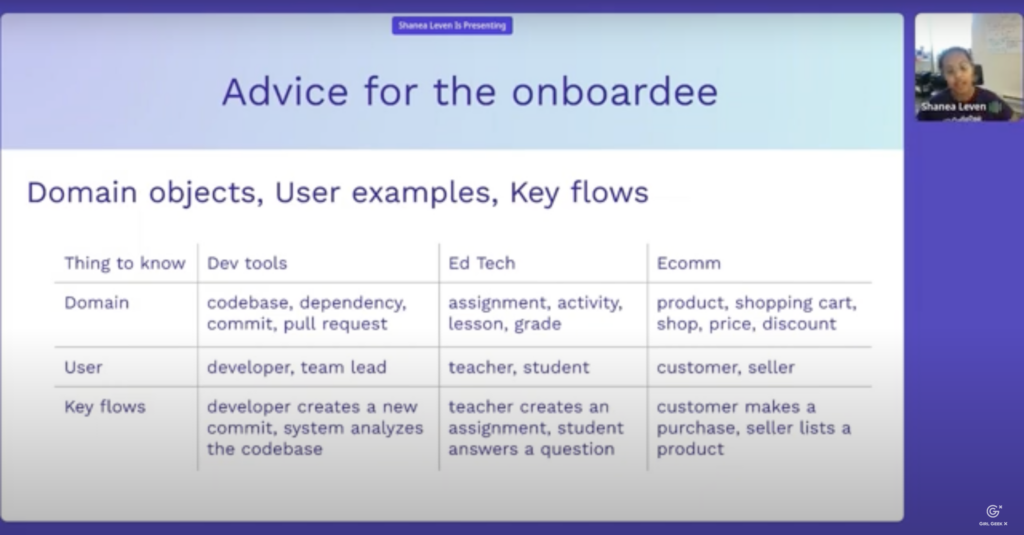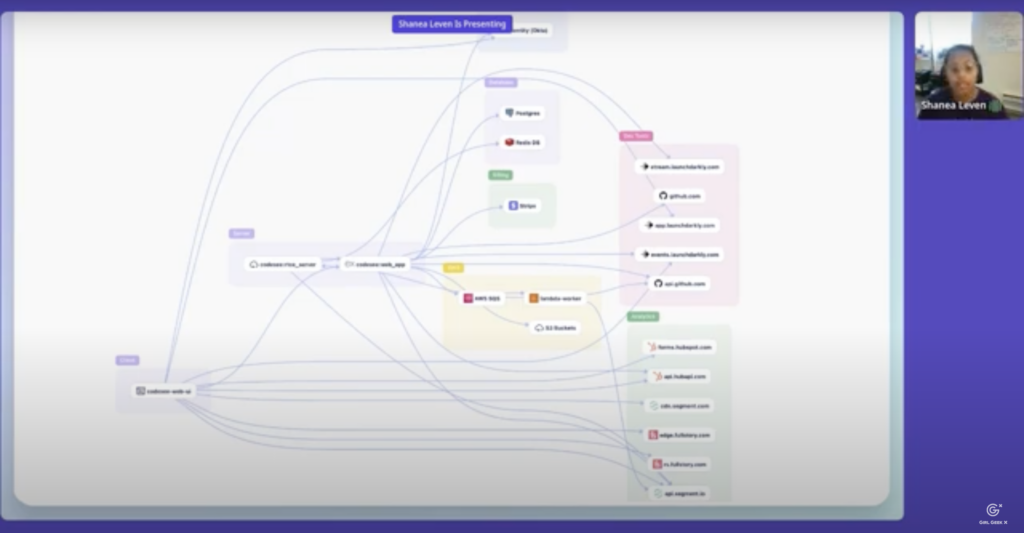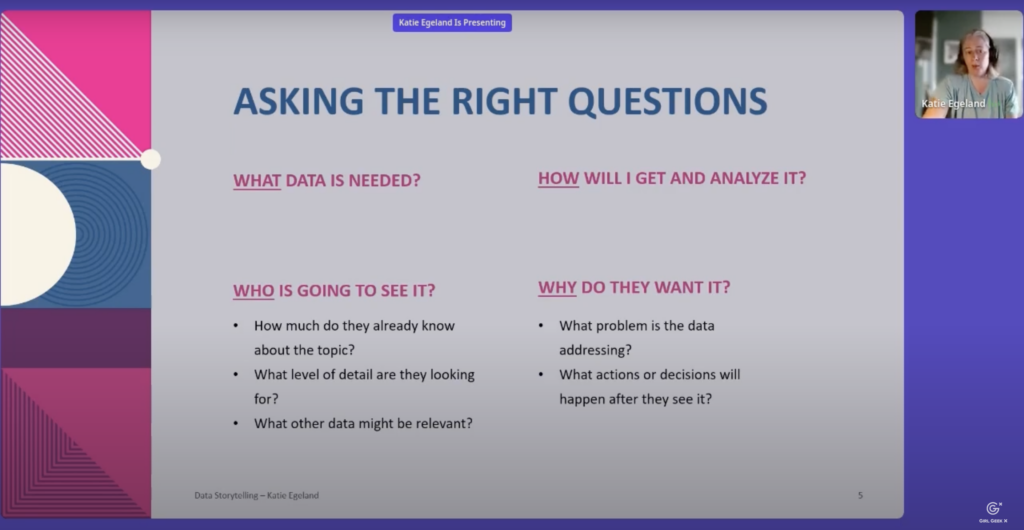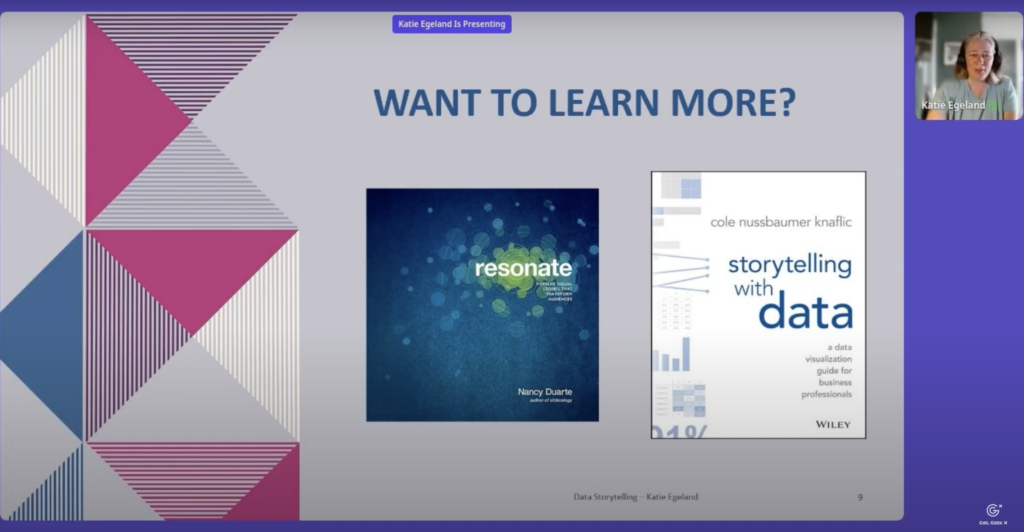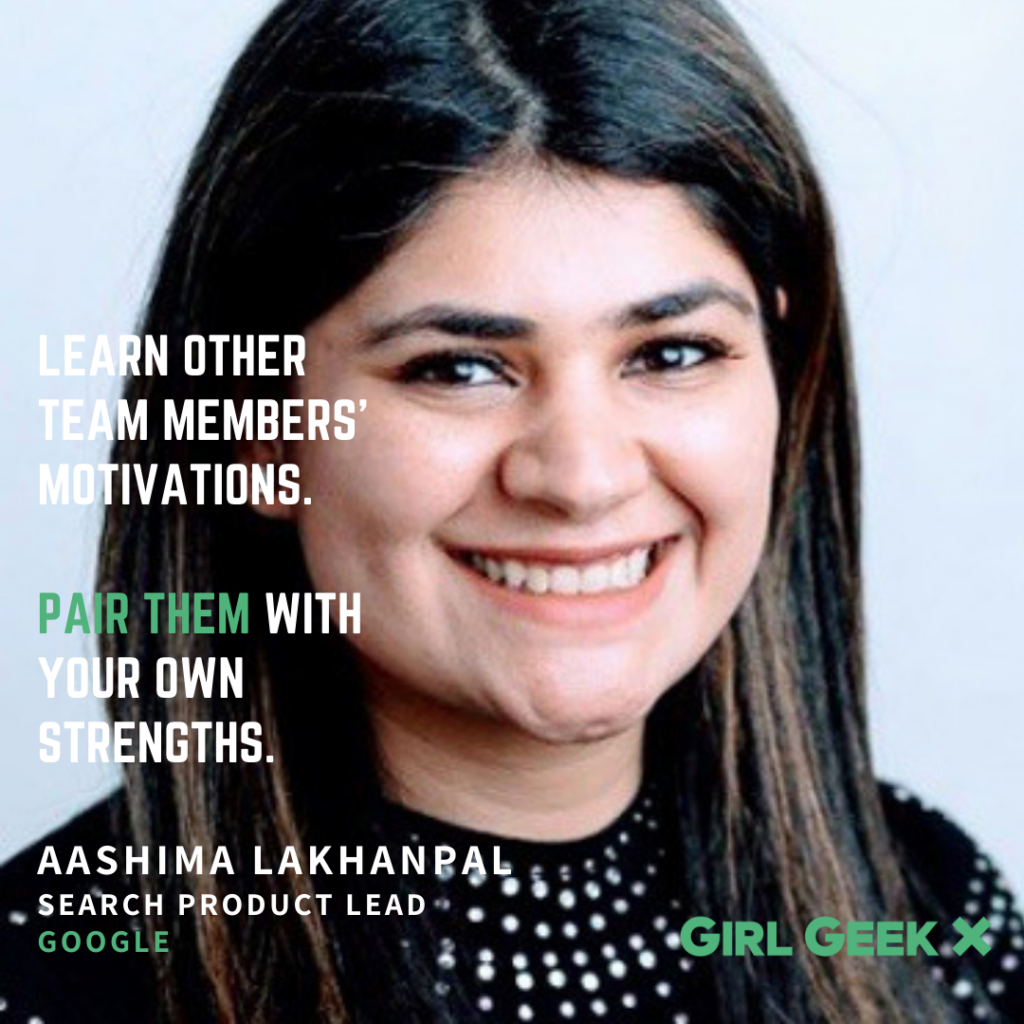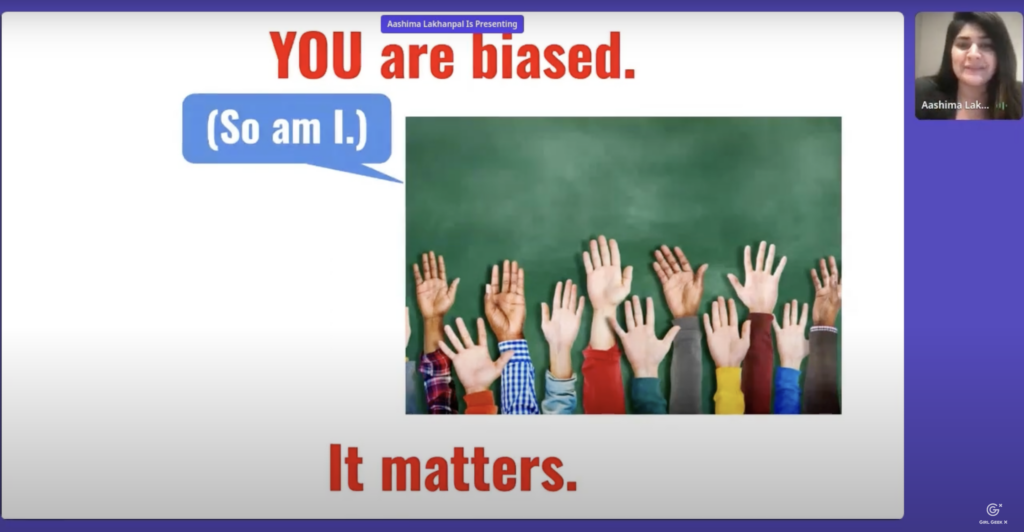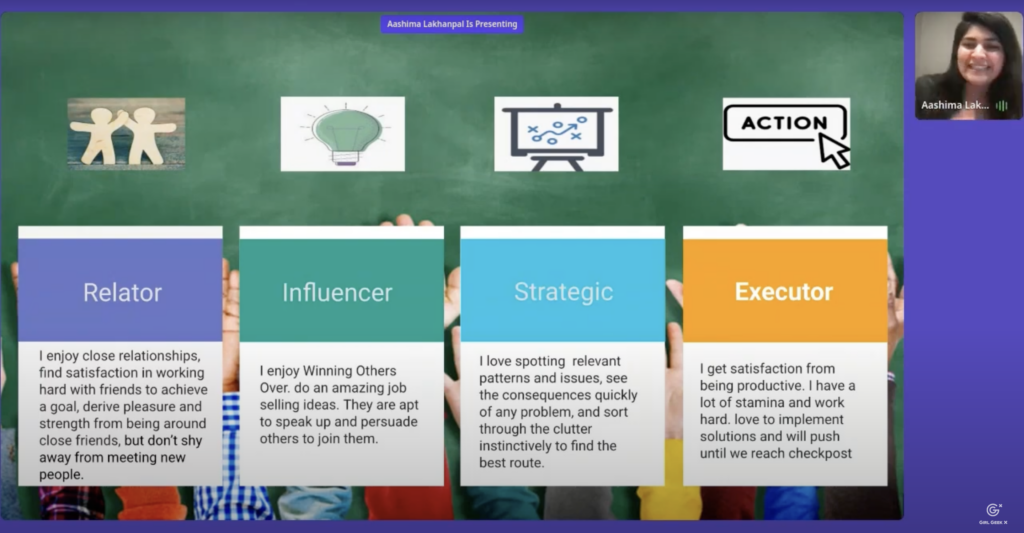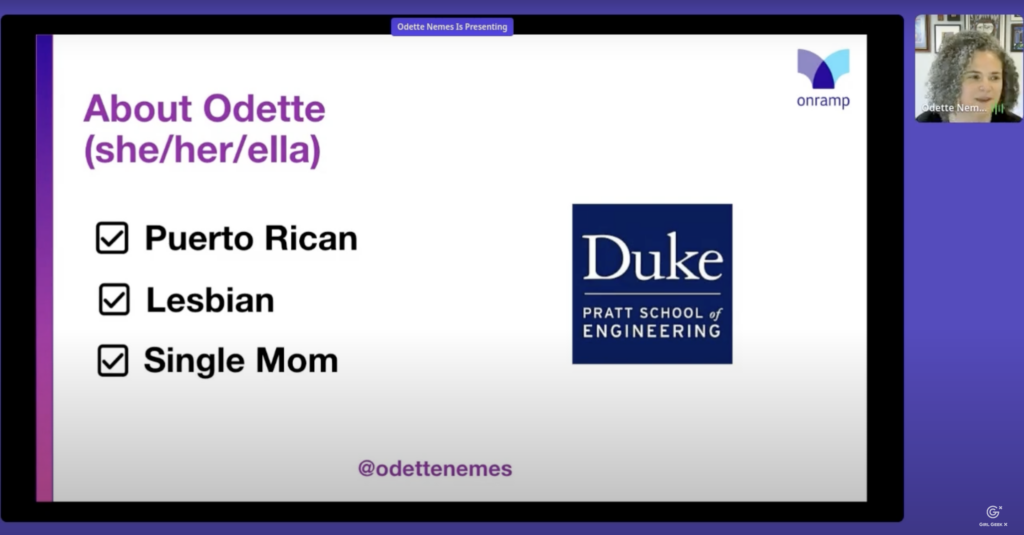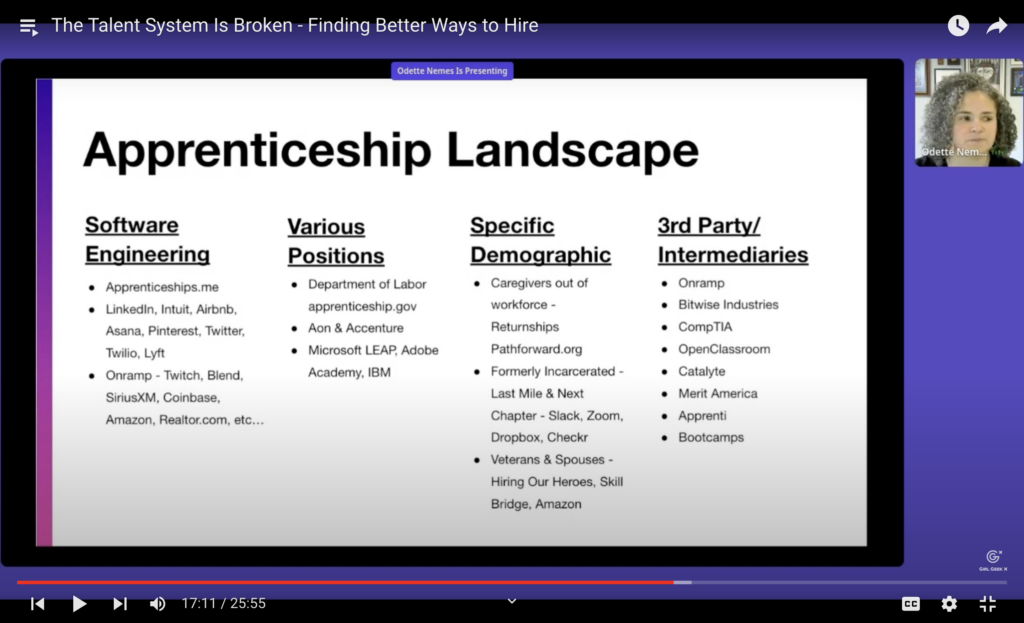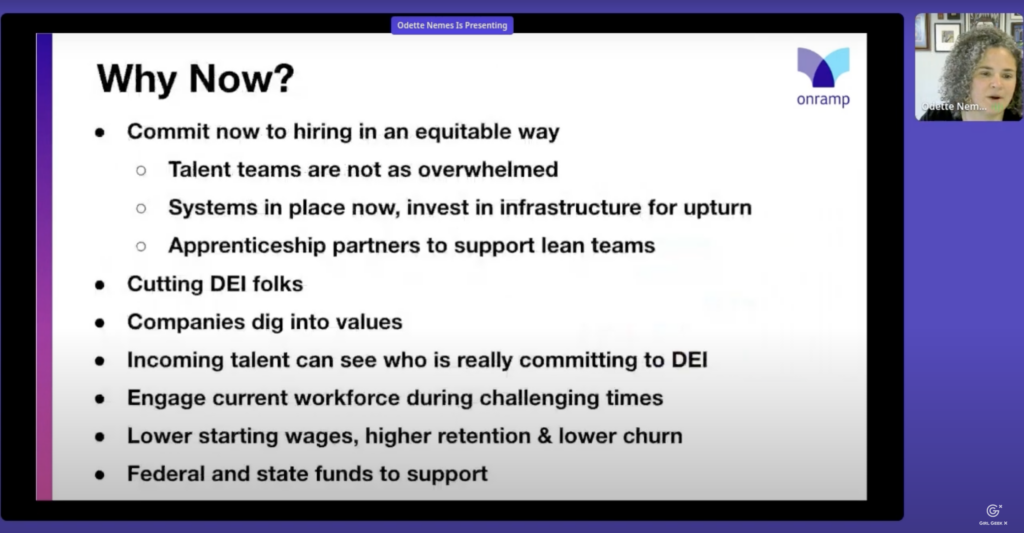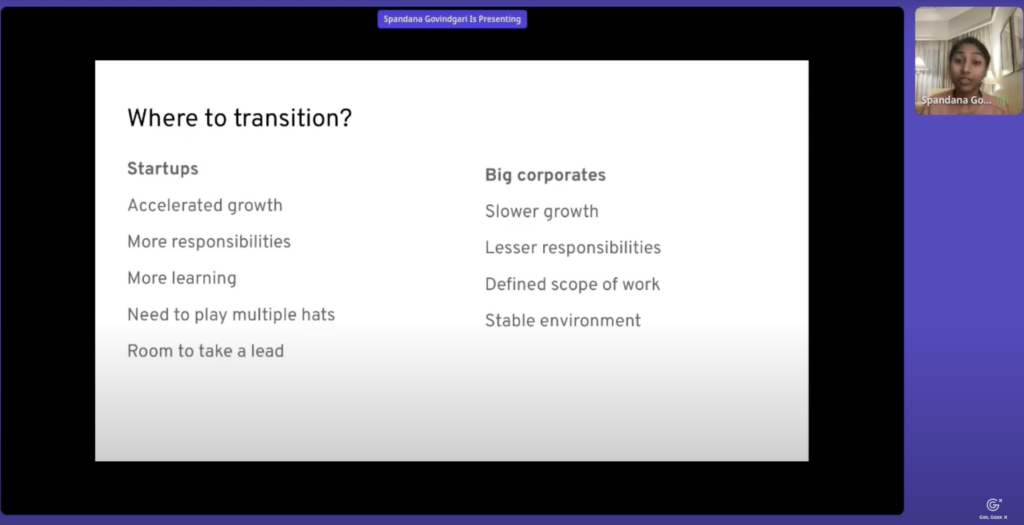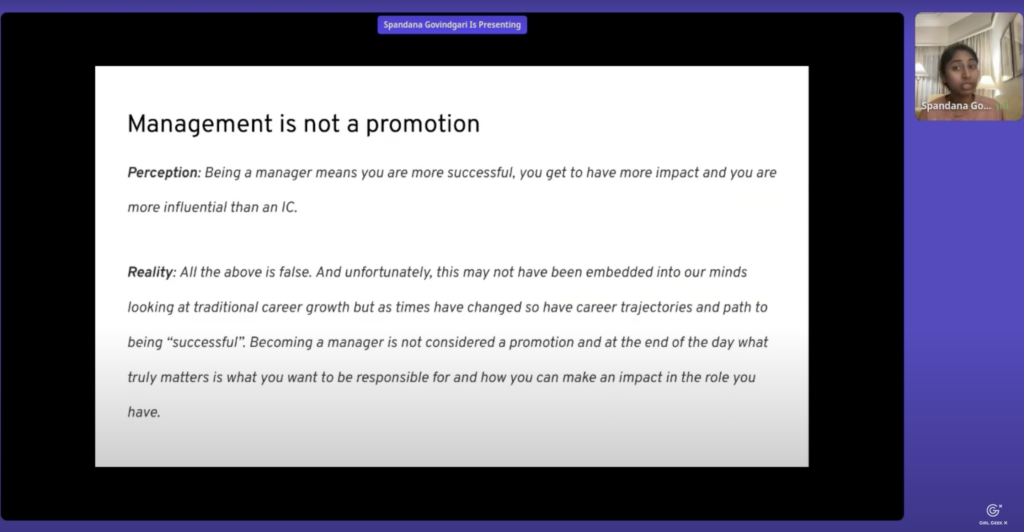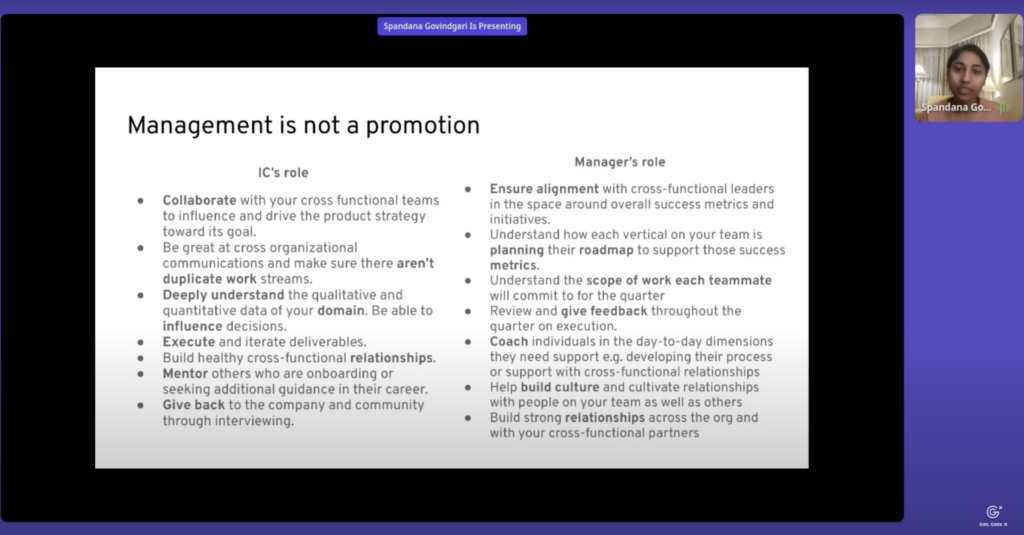Like what you see here? Our mission-aligned Girl Geek X partners are hiring!
- Check out open jobs at our trusted partner companies.
- Watch all ELEVATE 2023 conference video replays!
- Does your company want to sponsor a Girl Geek Dinner? Talk to us!
Angie Chang: We are going to be welcoming Kimberley Parsons, who’s the CEO and founder of Bamboo Teaming. She’s coming in from the Richmond, Virginia area. Please drop in the chat where you’re also coming in from today, it’s International Women’s Day! Thank you so much for joining us on this special day. Kimberley helps leaders develop and deliver on the full power of their leadership and so they can catalyze higher performance and results in their teams. Welcome Kimberley.
Kimberley Parsons: Yeah, thank you so much for having me today. I just wanna do a sound check that you can hear me. Yeah, there I am. Okay, great. Well welcome everyone. So great to have you here. I am Kimberley Parson, CEO of Bamboo Teaming. Just before I start and be off to the races, I just wanna share a little bit about me. I am joining you from Richmond, Virginia here to the East Coast where I hang out with my son and my husband and we make lots of fun memories together. I will tell you that I am a former technologist leader in technology after 10 years and really shifted my career through a women’s leadership development program to really helping teams and organizations be more effective. I was hooked through a lot of agile programming, agile development, agile leadership on the power of teams to really drive tremendous results within organizations. And so I wanted to do more thus changing my profession into HR coaching, executive coaching, team coaching, team development.
Kimberley Parsons: I’m here with you all today to talk about this topic of teams. Well let’s just jump right in to make the most of our time together. And my question for you all, have you ever led or been a part of a team that was full of highly talented people and yet it seemed like you could never hit your stride as a team. It was bumpy, you weren’t rolling, you look around and say, we should be cruising alarm together. You knew you had the potential to be more higher performing than you were, yet there was something that was holding you back, slowing you down, making it bumpy and capping your performance all together. So great from all the thumbs up and emotions and reactions.

Kimberley Parsons: I see that you’ve been a part of this team. Well, you are in the right place today because today we’re really going to focus on high level, quick touch three things. The first thing being what, how do you uncover your team’s specific strengths and opportunities in the four key dimensions that impact team functioning? Then we’ll go to well what does that mean for you as a leader? You will take some time to really think about like, well, what is your relationship and how your team is performing as a leader? And lastly, we will cover some common hot spots that can make incorporate team functioning and the corresponding team leadership behaviors you can do to cultivate kind of those areas that are hot spots for you today. That’s our roadmap. Quick housekeeping things. I will ask you to just drop questions in the chat.
Kimberley Parsons: My hope is that we’ll have some time to really go through those questions in the chat. And also just like you are doing right now, I invite you to engage with one another. If you hear something you’re like, aha, like that’s it. Like put it in the chat and keep the conversation going that way as well. With that, let’s just jump in to this first conversation, this first talking point around how do you know if your team is actually high performing? Not? Where are those places of strengths? Where are those places of opportunity? I love this quote, direction is more important than speed. You can go fast in the wrong direction. And so I work with teams who they are like, we need, they are the square tire, we need to have higher performance. And so they go and they just start picking and doing things.
Kimberley Parsons: My question is, well how do you know that the thing that you are picking and choosing to develop to grow is actually the right thing? It’s helpful when we have like a north star or a model for us of what high team performance looks like so that you can really do the assessment of, well, what are those strengths that we already have and what are those opportunities like, where do we need to head in terms of developing and growing ourselves as a team? In this first talking point here, really the goal is for you to think about where does your team have strengths and where does your team have opportunities in order to be higher functioning, higher performing as a team? And for this, the Caris team will is really useful. I like this as a model because it gives four dimensions of team functioning to pay attention to.
Kimberley Parsons: The first one being common purpose and goals, then roles and competencies, collaboration and cohesion, and then mutual accountability. Okay, so I’m going to give a really quick definition of these and as I go through, what I would ask you is to think about the team that you are closest to that you lead the team that you are most accountable for driving like big, tremendous audacious results in your organizations. Like think about that team and as we’re going, as I describe each of these dimensions, like make a mental note like is this a core strength for us as a team or is this an area of opportunity for us that we may need to address? Okay, are we good? Be thinking about strengths and opportunities for your team. First off, in the parentis team will at the center we have the common purpose and goal and common purpose and goal is really it addresses this question of why should we come together as a team?
Kimberley Parsons: What is our common purpose? Because rarely does a group of people, like do a group of people come together just for the sake of being together. There is something that is drawing them, connecting them, that’s really shifting them or causing them to need to be a team. So when a team has clearly defined their common purpose, it really gets to this question of, well, why should we come together? What is our remits? Why are we here? And having shared goals, it really speaks to what will we produce as a team. And so teams that have a strength in this area, they’re able to answer that question, what is our common purpose? And what are we producing together? Or this could be an area of opportunity, we come together, but maybe we’re not being as productive as possible because we’re not on the same page about our purpose.
Kimberley Parsons: We’re not on the same page about our goals. Again, think about is this an area of strength or opportunity for your team in this space of roles and competencies? Once we know what our shared purpose is, what our shared goals are, do we have the right people on the team and are we clear about the roles and responsibilities of each person on the team? Roles and competencies really answers this question of what are the contributions and expectations of each person on the team? Now I can imagine you’ve probably been a part of a team at least once in your life where it was unclear like who’s on first, as I like to say, what are the roles? What’s my area? What’s your area? How do we actually play together? How do we contribute together? That could be an indication, right? That this is a dimension roles and competencies that is an opportunity for that team to get clearer about so that it can drive higher team performance.
Kimberley Parsons: That’s just an example In this next section of collaboration and cohesion, how will we work together independently? What’s our rules of engagement for how we collaborate and how we connect to one another in terms of our relationships? Again, another space that could be a core strength for you or it could be a core opportunity. And lastly, in this dimension of mutual accountability, this is really about how do we hold ourselves and each other accountable for achieving results and upholding our standards. If this is a strength for you, you have practices in place that help you to hold one another accountable and you may not have practices in place or you need to strengthen them. So this could be an area of opportunity. I like really starting with the team will because it can give you a framework as to again, at North Star up, Hey, this is happening in my team, right?
Kimberley Parsons: This is an area of strength, this is an area of opportunity. And then the thing I like to say is, okay, leader or person who has influence in a team, what am I that they are that? Teams are systems. As the leader moves and shifts, it causes a reaction within the team. The question for you all today is, what am I that they are that in team performance, right? As you are thinking about how you were noting strengths and opportunities in your team as leader because you have such a weighty position within a team, such a weighty amount of influence within the team, what are you doing as leader to really catalyze higher team performance? Or where might you be frustrating that? And so the question for you to think about for yourself, right? Is really what are you doing to help drive a common purpose or share goals with the team?
Kimberley Parsons: Do you have the right people on a team? Are there clear roles and responsibilities? You leader, are there tools and practices in place to enable effective collaboration within the team? Are you helping to set or expecting setting the expectation that your team sets the conditions for inclusion, safety and productive interactions? And lastly, are there methods in place for the team to deliver results and address breakdowns when they occur? Right? So a lot of my work with teams leaders are really about how are you setting the conditions for accountability to be present within the team? Okay? As leader, again, what am I that they are that as it relates to team performance. And so lastly, the question for you to think about is which capability is most called for from you as a leader to catalyze higher performance in your team? If you said, Hey, my team has this area of opportunity, then turn the mirror on yourself, right?
Kimberley Parsons: What is it an area or a specific practice or behavior that you as leader can shift to really help catalyze that plant those seeds within your team? And so the last thing that we’re gonna cover here is for you to discover the common hot spots that can make or break team functioning and the corresponding team leadership behaviors that you can cultivate them. I work with a lot of teams, <laugh> I work with over a hundred teams and there tend to be some hot spots that keep showing up over and over within teams. I’m gonna go through these really quickly and I’m curious about which of these hot spots have you seen most often within teams?
Kimberley Parsons:The first one here misalignment on team purpose. And this is where the team, again, going back, they don’t have a clear purpose for why we’re working together as a team. If you ask the six people, the seven people that make up that team, you’d get seven different answers. That of course is the root the starting point of a team being able to function effectively. This is our number one starting point and I would work with you to get clear on what your team purpose is.
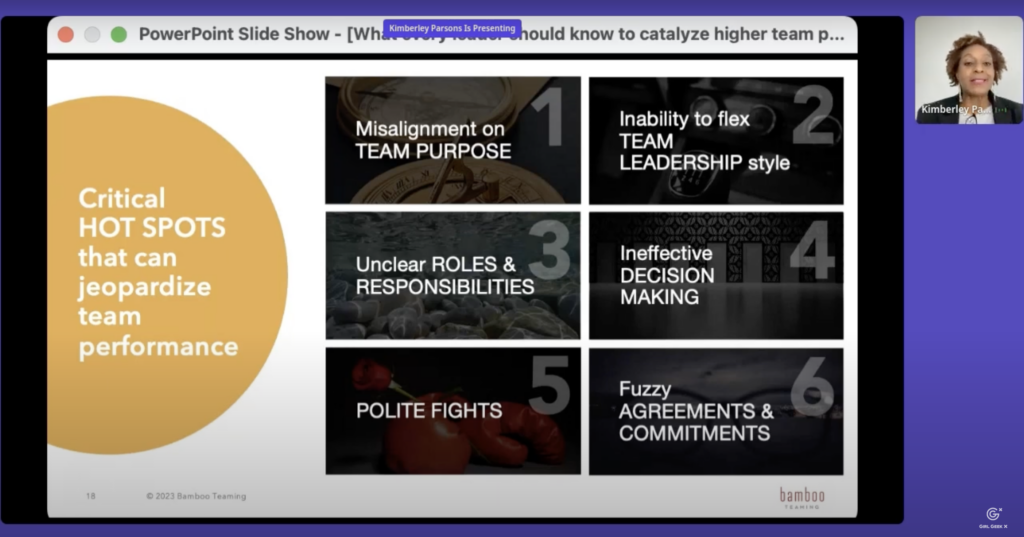
Kimberley Parsons: The second hot spot that I’ve seen is the inability to flex team leadership styles. And this is specific for the leader. I know that a lot of leaders really want to like, they have their preference for how they show up. I just wanna be participate participative with the team. Or I have leaders who are like, well, I just wanna like show up and like be directive. And this step back, what I would say is you need to really have an ability to flex your team leadership style based on what’s going on within the team, based on the people that are within the team.
Kimberley Parsons: The third hot spot is unclear roles and responsibilities. And so in this hot spot, this is where team members don’t have clear roles, responsibilities, there’s confusion or maybe there needs to just be a question around accountability around your space, MySpace, our space decision rates, what are those things, right? That is present there. And then in this fourth hot spot, ineffective decision making. This is where I work a lot with leaders on decision rights. Are you clear about who owns the decision here? Are you clear about the decision mode that you are using? Do you make decisions using consensus? Do you make decisions using authority? Do you make decisions using democracy? Does everyone vote? Does the leader just make a decision? And what I find often is that this isn’t clear in the team. It actually slows down. It makes decision making inefficient within the team.
Kimberley Parsons: Another hot spot that I see is polite fights. And so polite fights is where the team I hear often as we have a nice culture, so we don’t actually say the thing that needs to be said or we have disagreements about how we should move forward, but yet that doesn’t actually happen in the room with the team where you can harness and tap into the wisdom of the team. All of that happens outside of these teams because we didn’t wanna say anything, right? Or we say things but we’re not really saying the thing. There are polite fights there. And then the other hot spot that I see often is fuzzy agreements and commitments. It’s hard to have mutual accountability when you’re unclear about what the request was that you were asked to do. So what’s the agreement that we actually made?
Kimberley Parsons: You might hear it sound like soft ask of, it would be great if you could do this thing for me. Was that actually a request or not? Did I actually say yes or not? They’re fuzzy agreements and commitments and on a commitment side you get the I’ll try <laugh>, right? I’m not sure if that person actually committed to me or not. When breakdowns occur, it was really fuzzy and it’s hard for us to hold each other accountable. Okay, with that I am just going to share this poll really quickly. I would love to hear what are, what is the hot spot that you have seen most often within teams? And I’m trusting that you all can see the pole. I don’t know, can you see the pole? No, maybe? I don’t see the pole. Okay. Oh yeah, you see the pole? There we go. We’re getting some boats coming in. Okay, it’s going, it’s going. I don’t know if you all see the responses. Keep voting show on stage. Do you see it?
Kimberley Parsons: Okay, good. All right, awesome. Well it looks like the winner right now is unclear roles and responsibilities and then polite fights is coming in behind there. Fuzzy agreements and commitments. Okay, unclear roles and responsibilities. Wow, that is getting the majority here. I am going to close the poll. I don’t know if I closed the poll or not. I think I did technology. I love it. I go back to this question of what am I that they are that and if you are seeing like unclear roles and responsibilities has 23 votes here, right? What are you doing as a leader? Going back to you as leader turned the mirror around, what can you, what steps can you take as a leader to help have clearer roles and responsibilities within your team? One of the things I would suggest is really bring your team together and just do a mapping around accountability.
Kimberley Parsons: Do a mapping around decision rights. Do a mapping around roles, right? That is a, that is a simple activity that you can do with your team to help create more clarity, which leads to higher team performance, right? And so you can really go through any of the hot spots that you are experiencing within your team and ask yourself that question, what as leader can I do? What practices, what behaviors can I really do to shift, right, to help, to shift, to turn the tie, to have my team show up higher performing, higher functioning within this particular area. And so with that, I am going to go all the way. Keep going, keep going, keep going. Which hot spot needs the most attention in your focus team and what leadership moves might you make to shift the team’s effectiveness in that area? That is the question for you to walk away with. And then what’s the most powerful bite size action do you will take to impact your team’s effectiveness after this talk? That is the question for you, feel free to throw that in the chat box. I’ll open up the chat box so we can see some responses here. And Angie, I think that is my time. Thank you all so much for joining. I appreciate you being present. I’d love to continue this conversation with you.
Angie Chang: Thank you. That was an excellent talk. We think we have two more minutes actually, so if you want to answer any questions for two minutes and then we will wrap up.
Kimberley Parsons: Okay, perfect. Let’s do a question. If you have a question, throw it in a window. What about the manager not being able to manage the team properly, like if people step on each other and conflict management? Hmm. Thank you so much for the question. I think the response that I have, like my immediate reaction to that is what about the manager not being able to manage the team properly is to get to the root cause? Like I’m curious about if the manager is the manager of the team, why is manager not able to manage the team properly and maybe there’s some forensics that needs to happen in that space. Like if people step on each other in conflict management. Then the other part of what I would answer in that is I’m a big proponent of do some micro training with your team around a model, a method for conflict management and then practice and try it together and position it as we’re gonna do this experiment, right? First off is get to the same language around conflict management and how you do it and then position it as we’re gonna do an experiment and try out like this model that we just learned together. And it’s amazing because that can create like a safe space for you all to practice being more effective in this area. That’d be the second thing. Do I have time for one more question?
Angie Chang: Yes. One question.
Kimberley Parsons: What about management responsibility without authority? Wonderful question. The thing that I like to say is that we are all like, I firmly believe that we all have a place of influence within the teams that we are a part of. I think when you’re in this leading without formal authority or role, that’s where the relationship piece becomes super important. Really taking a time to go, go to one-on-one coffees, virtual coffees. If you’re not in person, really start to build the relationship and really practice like this move of inquiry. Get curious about, well hey, in this particular area I’m curious about like what your perspective is. Here’s my perspective. Really do this dance of inquiry and advocacy and build those relationships with each other. And I would also like just push, push back gently and say, I think we all have more influence than what we may give ourselves credit for as well.
Angie Chang: All right, great. We’re at time. Thank you so much. We are going to be moving into our next session, which is speed networking and hanging out in the lounge. Feel free to go wander over to the lounge. There are some tables there with either logos of companies that are hiring or there are also table topics like product engineering different teams based on the different job titles that you want to get or already have. Feel free to join those and thank you so much, Kimberley.
Kimberley Parsons: Yeah, thank you for having me.
Angie Chang: Thank you.
Like what you see here? Our mission-aligned Girl Geek X partners are hiring!
- Check out open jobs at our trusted partner companies.
- Watch all ELEVATE 2023 conference video replays!
- Does your company want to sponsor a Girl Geek Dinner? Talk to us!


